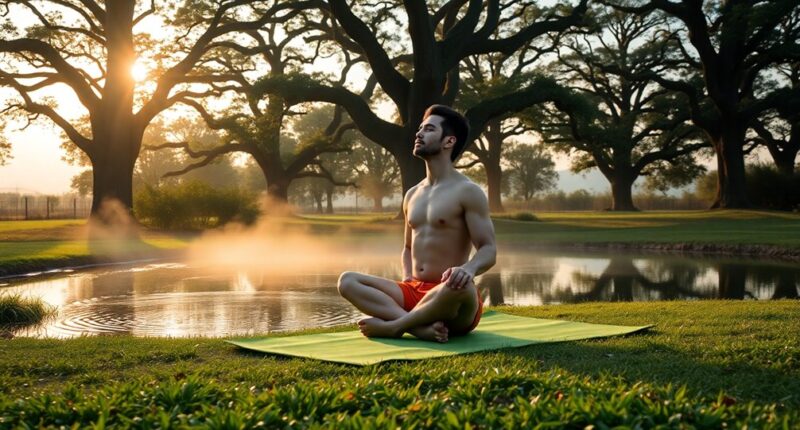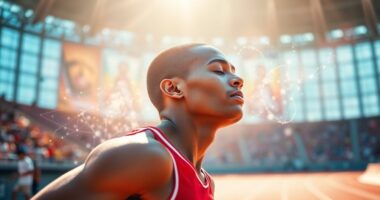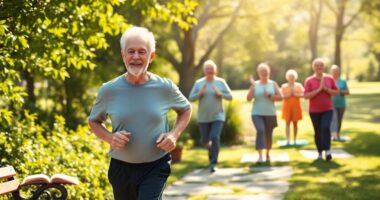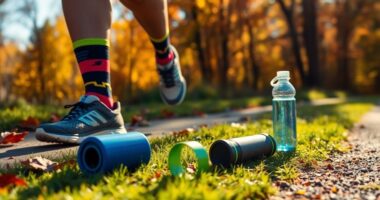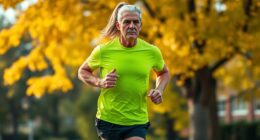You can fix your runner's knee in just 48 hours by using an ancient Chinese breathing technique that enhances glute activation. This deep breathing helps you connect with your muscles, ensuring they're engaged properly during exercise. When your glutes activate effectively, you reduce strain on the knees and improve your overall running mechanics. Incorporating visualization along with your breathing can take your workout to the next level. Discover more ways to support your knees and enhance your performance.
Key Takeaways
- Deep breathing helps enhance focus and relaxation, crucial for effective muscle activation in the glutes.
- Visualizing glute engagement during breathing reinforces the mental connection, improving muscle responsiveness.
- Consistent use of breathing techniques can complement flexibility and stability exercises, reducing knee strain.
- Incorporating breathing exercises into warm-ups boosts circulation, promoting healing and performance.
- Regular practice of these techniques aids in maintaining proper running form, preventing aggravation of runner's knee.

If you've ever experienced pain around your kneecap, you might be suffering from runner's knee, a common issue that often arises from muscle imbalances, particularly weak glutes. Many people overlook the importance of glute activation, leading to improper knee mechanics during activities like running. When your glutes aren't firing correctly, other muscles compensate, causing strain on your knees.
To tackle this, consider integrating a simple yet effective breathing technique rooted in ancient Chinese practices. This technique helps improve your focus and promotes relaxation, which can be crucial when you're trying to enhance your exercise routine. As you breathe deeply, visualize your glutes engaging, and feel the connection between your breath and muscle activation. This mental component can significantly enhance your workout, ensuring your glutes are working optimally.
Incorporating tendon massage is also vital in your recovery journey. Focusing on the quadriceps and shin areas helps enhance blood flow and reduce scar tissue, which can develop from overuse or injury. By improving circulation, you promote healing and make your muscles more responsive during exercise. A few minutes of targeted massage can complement your warm-up routine and boost your performance.
Flexibility and stability play a crucial role in managing runner's knee symptoms. Before your runs, engage in a comprehensive warm-up that includes deep squats, lunges, and single-leg deadlifts. These exercises not only improve your range of motion but also reinforce proper running techniques. Maintaining flexibility in your hips and legs reduces strain on your knees and promotes better alignment.
Adopting proper running techniques is essential for sustaining knee health. Focus on mid-foot striking and heel pushing during your runs. These techniques ensure that your knees are protected and that the supporting muscles are activated efficiently. By consciously adjusting your form, you can mitigate the risk of aggravating your runner's knee.
Lastly, don't forget the importance of consistency in your glute activation exercises. Clam shells and leg raises should become staples in your routine to strengthen those critical muscles. Additionally, understanding emotional regulation can help you manage the frustration that often accompanies pain and injury, enhancing your overall recovery experience.
Conclusion
In just 48 hours, you can transform your experience with runner’s knee using this ancient Chinese breathing technique. By incorporating deep, mindful breaths into your routine, you’ll not only alleviate pain but also enhance your overall well-being. Remember, consistency is key, so practice regularly to maintain those benefits. Don’t let runner’s knee hold you back any longer; embrace this holistic approach and get back to enjoying your runs with renewed vigor and ease! Additionally, combining this breathing technique with gentle stretching can further amplify the yoga benefits for runners, promoting flexibility and strength in the knees. As you immerse yourself in this practice, you may find that your body becomes more resilient, allowing you to tackle longer distances with confidence. So, take the time to nurture yourself through these methods, and watch your running journey flourish.
